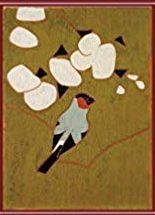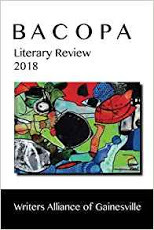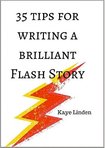Writing on the Head of a Pin
Next Contest: March 18 – May 17, 2019: $300 Prize and Honorable Mention in Fiction, Creative Nonfiction, Poetry, Prose Poetry, and Haiku (no submission fee this year).
Monday, February 25, 2019
Writing on the Head of a Pin
by Haiku & Prose Poetry Editor Kaye Linden
The language of haiku demands precision and restraint. Each word must count, each word must offer meaning. This tiny poem expresses a truth or viewpoint in layers of concrete detail and juxtaposed visual imagery, demanding skill and focus, and language control.
Haiku captures a moment when the mental chatter ceases and the heart “feels” a connection previously unseen. In just a few lines, haiku embodies the essence, the holiness of being alive–a flash of surprise, an interesting perspective. Such brevity demands skill and focus, like writing on the head of a pin. The reader is the yin of the yang in this form where the writer and reader meet half way. A reader might take away an intellectual concept from the haiku or “feel” the emotion of the poem like a light punch in the solar plexus.
 According to Higginson in The Haiku Handbook, haiku happens when we “see or sense something that gives us a bit of a lift, or a moment’s pure sadness. Perhaps it is . . . some scent on the wind . . .
According to Higginson in The Haiku Handbook, haiku happens when we “see or sense something that gives us a bit of a lift, or a moment’s pure sadness. Perhaps it is . . . some scent on the wind . . .
At midnight
A distant door
Pulled shut
and we find ourselves more alone, because of the being on the other side of that door.”
Perhaps you have heard of some of the greatest Japanese haiku masters. Basho, Issa and Buson were a few of the most well known. In 17th century Japan, poets often met in groups to compose a single long poem and together contributed two or three lines in an ongoing string of poetry, sometimes traveling throughout the country and adding to the linked poetry. This original linked haiku writing was known as Haikai no renga or haikai. In traditional style, the three-lined poem had a “kigo” or seasonal word, but today this is not necessarily the rule. The traditional criteria to include a seasonal theme has expanded to incorporate other themes such as human or animal themes or playful irony:
Years later–
she polishes the silver comb
with his toupee
Notice that haiku does not demand a title. It is a snapshot, and a title would suggest and distract the reader from an immediate response. The “image” of a haiku must capture the reader with specific concrete words such as “toupee” and “silver comb.” Instead of “anger,” which is a vague word to visualize, we “see” a disgruntled woman, possibly a widow, or an angry divorcee. This is the classic “showing not telling.” Can you see the irony in the juxtaposition of the use of the word “toupee” for a bald head, and the use of a rich man’s comb, a woman polishing with his hairpiece? How does she feel about this man?
When writing haiku, try to use words that might appeal to the senses, which can include touch, hearing, taste, smell, temperature, movement, pain, and any others you can think of. Therefore, when creating haiku, connect two images in unusual or surprising ways.
After the funeral–
even the mountains
are small
after the funeral–
a blood-red moon
Now write your haiku.
* * *
Submissions to Bacopa Literary Review 2019 will be open March 18 – May 17,
with a $300 prize and Honorable Mention in Fiction, Creative Nonfiction,
Prose Poetry, and Haiku (no submission fee this year).
Email ThisBlogThis!Share to TwitterShare to FacebookShare to Pinterest
Labels: Bacopa Literary Review, Basho, Buson, haiku, Higginson, Issa, Kaye Linden, The Haiku Handbook
No comments:
Post a Comment
Older Post Home
Subscribe to: Post Comments (Atom)
Bacopa Literary Review is an annual international print journal published by Writers Alliance of Gainesville.
Duotrope Interview: details about who we are and what we seek.
EDITORS:
Editor in Chief/Fiction Editor Mary Bast, poet/memoirist, artist.
Creative Nonfiction Editor Susie H. Baxter, prize-winning author, teacher of memoir.
Haiku/Prose Poetry Editor Kaye Linden, MFA, award winner in all genres.
Poetry Editor J.N. Fishhawk, poet, freelance writer/editor.
Click Image For 2018 Issue
">

Connect on Social Media
FACEBOOK and TWITTER
Search This Blog
Follow by Email
http://www.singingformyfriends.com
A celebration of "Tales from Ma's Watering Hole" a linked flash collection of magic realism.
"Ma is a character we can all relate to and at the same time wish we had her magic. She teaches respect for the earth and all its creatures, but she doesn't preach. Ma has a sense of humor and guides us through the outback with tales that cast a spell, all mysteriously connected yet each with its unique story." Mary Bast author/consultant
Add it to your shelf:
https://www.goodreads.com/book/show/1... ...more
- Kaye Linden's profile
- 40 followers





